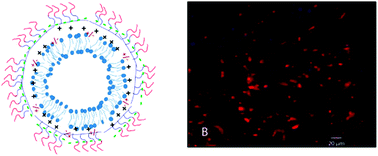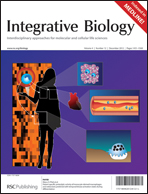Delivery of siRNA silencing Runx2 using a multifunctional polymer-lipidnanoparticle inhibits osteogenesis in a cell culture model of heterotopic ossification
Abstract
Heterotopic ossification (HO) associated with traumatic neurological or musculoskeletal injuries remains a major clinical challenge. One approach to understanding better and potentially treating this condition is to silence one or more genes believed to be responsible for osteogenesis by small interfering RNA (siRNA) post-injury. Improved methods of delivering siRNA to myoprogenitor cells as well as relevant cell culture models of HO are needed to advance this approach. We utilize a model of HO featuring C2C12 myoprogenitor cells stimulated to the osteogenic phenotype by addition of BMP-2. For siRNA delivery, we utilize a nanocomposite consisting of DOTAP-based cationic liposomes coated with a


 Please wait while we load your content...
Please wait while we load your content...